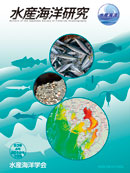Although there is a huge outbreak of juvenile Manila clams Ruditapes philippinarum in Rokujo tidal flat in Mikawa Bay every year, the Manila clam population declines from autumn to winter. However, the cause is not yet clear. To understand the mortality cause, we conducted field observation from spring to winter for three years (2014–2016), and monitored the physiological state, e.g., growth, condition factor, and maturity. In addition, we conducted a field experiment by using a stainless cage in 2015. Results of the field observation indicated that the number of Manila clams decreased by less than 10% from October to December each year. Results of the field experiment in 2015 indicated that Manila clams in the stainless cage died and the population equally decreased compared to the control group that was not protected by a cage. Consequently, it was not considered that windswell in winter and predation pressure of dabbling ducks and large carnivorous gastropods were the main causes of mortality. On the other hand, the population maturity rate had increased throughout the months of October until December in 2016. It was considered that sexual maturation and spawning were related to the mortality in autumn. Because the growth of the Manila clam population had slowed down from July or August every year, it was considered that individual Manila clams had not been in healthy condition from summer to autumn due to the influence of density effect and oligotrophication in estuaries. Therefore, these results suggest that large energy loss through sexual maturation and spawning in autumn under an oligotrophic condition causes mass mortality of the Manila clam population.
View full abstract
